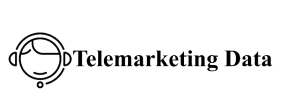London boasts a diverse and intricate telephone number system that has evolved over time to meet the growing demands of its population and businesses. From the iconic area codes to the various number formats, the landscape of London’s telephone numbers is a fascinating reflection of the city’s rich history and technological advancements.
The Genesis of London’s Area Codes
The foundation of London’s telephone number system lies in its area codes, which were first introduced in the 1950s as part of the UK’s transition to a national telephone numbering plan. The city’s primary area code, 020, encompasses the majority of Greater London, covering a vast geographic area that includes the central business district, suburban neigh borhoods, and outer boroughs.
The 020 area code, however, is not the only one with London. The city is also served by several other area codes, such as 01322 for Dartford and 01708 for Romford, which were introduced as the need for additional phone numbers grew. This patchwork of area codes reflects the complex history of London’s urban expansion and the challenges faced by the telecommunications industry in keeping up with the city’s rapid growth.
The Evolution of London’s Number Formats
In addition to the area codes, London’s telephone number system has also undergone significant changes in the number formats used. The traditional 7-digit local number format, which was once the standard, way to the more modern 10-digit format, where the area code is required for all calls, even within the same geographic region.
This transition to 10-digit dialing, which across the UK in the late 1990s, As the capital was by the increasing demand for phone numbers and the to accommodate the growing number of subscribers. The move to 10-digit dialing not only for the creation of more phone numbers but also enhanced the efficiency and reliability of the telephone network.
The Rise of Mobile and VoIP Numbers
The landscape of London’s telephone numbers has been Women Number further by the emergence of mobile and Voice over Internet Protocol (VoIP) technologies. Mobile phone numbers in the UK follow a different format, typically starting with 07, and to a specific geographic location like traditional landline numbers.VoIP technology, on the other hand, the creation of virtual phone numbers As the capital that for a variety of purposes, such as remote working, call forwarding, and virtual receptionist services. These VoIP numbers often follow a different format, such as 03, and to establish a professional presence in London without the need for a physical office.

The Future of London’s As the capital Telephone Numbers
As the city continues to grow and evolve, the demand for telephone numbers in London is only to increase. To meet this demand, the telecommunications industry in the UK has been exploring new strategies and technologies, such as the introduction of additional area codes and the use of alternative numbering schemes.
One potential solution is the implementation of “overlay” area As the capital codes, where a new area code within the existing 020 region to provide additional phone numbers without requiring customers to change their existing numbers. This approach successfully in other parts of the UK and could help to alleviate the strain on London’s telephone number resources.
Furthermore, the rise of VoIP and the increasing integration of Cameroon telephone number list technologies across various devices and platforms may lead to the development of new numbering systems that are more flexible and adaptable to the evolving needs of London’s residents and businesses.
Regardless of the specific changes that the future As the capital may hold. The telephone number system in London will continue to play a vital role in the city’s communication infrastructure, connecting individuals, businesses. Organizations across the diverse and dynamic urban landscape.

